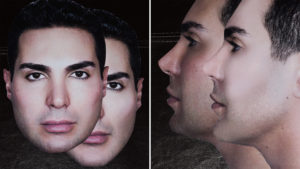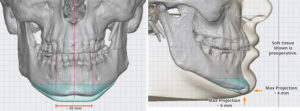Background: Chin implants are the most common form of facial augmentation and have the largest selection of styles and sizes of any facial implant. But despite this wide selection there are some patients in which a standard chin implant will not suffice. This is particularly relevant when any degree of vertical lengthening is needed or a very specific chin hape is needed. (e.g., square shape)
A custom chin implant offers the ability to make any desired dimensions and shape the patient desires as long as it does not exceed the coverage capacity of the overlying soft tissue. The critical question is what should those exact implant dimensions be made to achieve the look that the patient desires? The computer can make what it is told…but it has to be told what to make. No software program can make a design knowing the exact patient external look it will create.
Until there is computer software that can transfer any custom implant design to what it will actually like on the patient’s external appearance, the best that can be done is to ‘guess’ as to what the effect will be. Experience helps in this guessing but there remains currently no precise translation of implant design to the external change in facial appearance.
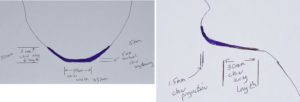
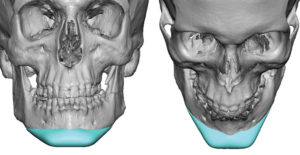
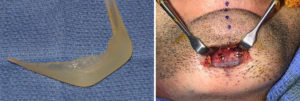
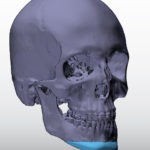
Highlights:
1) A custom chin implant is needed when standard chin implants can not achieve the dimensions needed, particularly that of vertical lengthening.
2) One method of creating the desired chin shape change is to take measurements from life size before and after morphed pictures.
3) The computer design process for the custom implant then uses the measurements of the cut out chin implant morph from the pictures.
Dr. Barry Eppley
Indianapolis, Indiana



